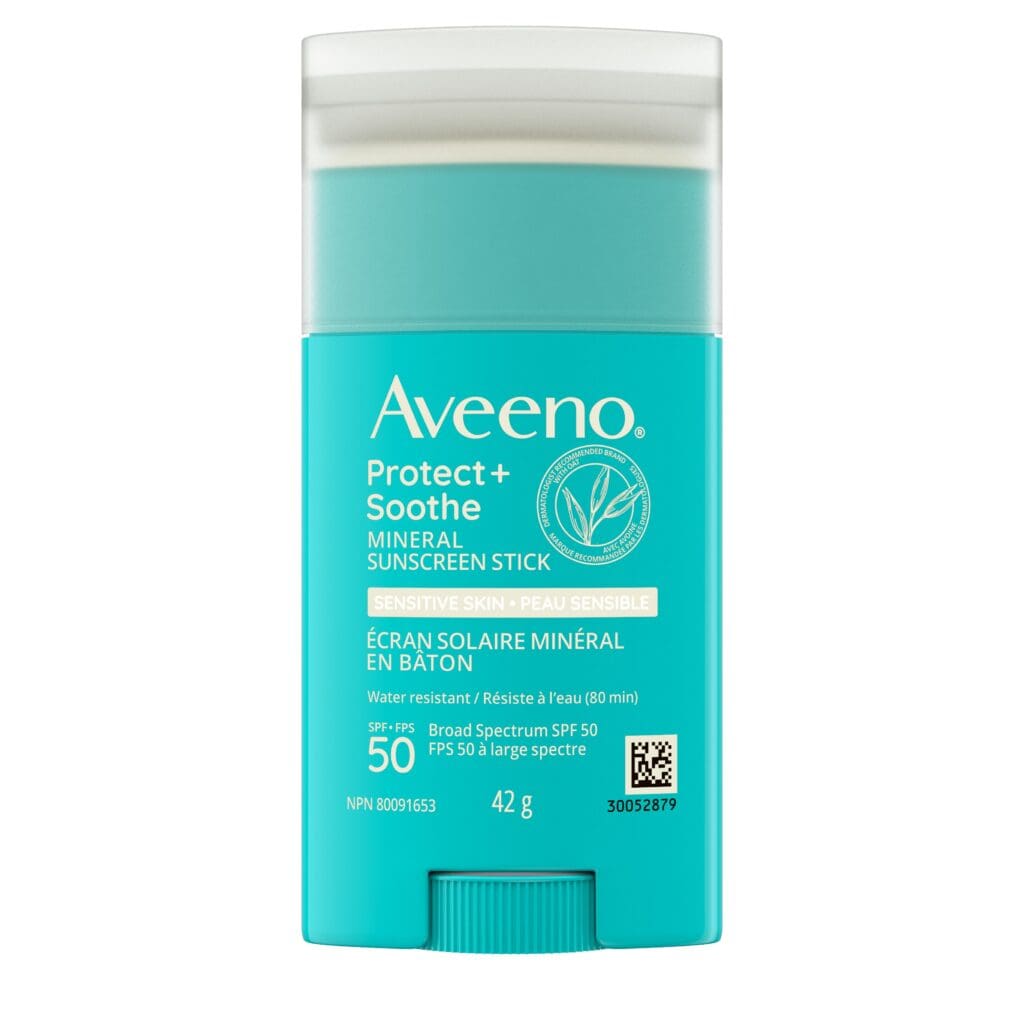National Sunscreen Day may have passed … but it’s always a good time to raise awareness around the importance of using sunscreen daily to protect your skin from the harmful effects of the sun’s strong UV rays. Skin cancer, particularly melanoma, is one of the most common types of cancer affecting people aged 15-49. According to Melanoma Canada, by age 50, men are more likely to develop melanoma than women, highlighting the need for everyone regardless of gender, to take proactive steps to protect themselves from the sun. Our SPF-loving friends at Neutrogena and Aveeno connected us with Dr. Julia Caroll, a renowned dermatologist in Toronto, to learn more. —Noa Nichol
Hi Dr. Carroll! Please tell us a bit about yourself to start.
I’m a board-certified dermatologist practicing in downtown Toronto with a special interest in skincare, injectables and lasers. I travel worldwide, both lecturing and learning, to bring the latest results-oriented treatments to my patients. I am the co-founder of Compass Dermatology in downtown Toronto and hold a faculty position within the University of Toronto, Division of Dermatology. I am also on the board of Melanoma Canada and the Canadian Association of Aesthetic Medicine.
National Sunscreen Day was on May 27; what’s the aim of this day, and why, after so much messaging, do we still need reminders around the importance of using sunscreen?
The overarching goal of National Sunscreen Day is to encourage preventive measures and foster good sun safety habits. It acts as a reminder to always protect your skin from harmful UV rays, not just during the summer months but throughout the entire year. Despite the vast amount of information available regarding the risks of excessive sun exposure, a substantial number of people still neglect to use sunscreen regularly, or don’t use it correctly.
Let’s go back to basics: what does sunscreen do? When should we apply it? Where should we apply it? How much?
Sunscreen acts as a protective layer on your skin to absorb or reflect harmful ultraviolet (UV) radiation from the sun. There are two types of UV rays: UVA and UVB. UVA rays can prematurely age your skin, causing wrinkles and age spots, and can pass through window glass. UVB rays are the primary cause of sunburn and are blocked by window glass. Both can damage your skin and lead to skin cancer. Sunscreen should be applied first thing in the morning, make it a part of your self-care routine 15 to 30 minutes before going out in the sun. It’s also important to reapply at least every two hours if outside or by a window, and immediately after swimming or sweating. Even on cloudy days, up to 80% of the sun’s harmful UV rays can reach your skin, so you should wear sunscreen every day. Sunscreen should be applied to all skin that will be exposed to the sun. This includes your face, ears, neck, hands, and the tops of your feet. Don’t forget about your lips, too – a lip balm with an SPF of 30 or more can help protect this area. If you have thinning hair, either apply sunscreen to your scalp or wear a hat. In terms of how much to use, I recommend about one ounce (roughly a shot glass full) of sunscreen for the exposed areas of the body. A teaspoon of sunscreen should be used for the face alone. Most people apply less than half of that amount, which means they get half the sun protection. Make sure to apply a thick, even coat to all exposed skin and rub it in well. Choosing a broad-spectrum sunscreen with an SPF of 30 or higher, and one that is water-resistant, can give you the best protection against the sun’s harmful UV rays. And remember, sunscreen should not be used as a way to extend your time in the sun. It is just one part of a sun protection regimen that should also include seeking shade, wearing protective clothing, and avoiding the sun during peak UV ray hours between 10 am and 2 pm.
Sunscreens now come in different scents, with shimmer, in fancy bottles, etc.; what are the most important things to look for in an effective sunscreen?
Broad spectrum: the words “broad spectrum” means that the sunscreen can protect your skin from both types of harmful UV rays — the UVA rays and the UVB rays. Additionally, look for SPF 30 or higher: it is recommended that you select a daily sunscreen with an SPF rating of 30 or higher.
What about people with sensitive skin?
For people with sensitive skin, I recommend using a mineral sunscreen. These contain titanium dioxide and/or zinc oxide. I find that these ingredients tend to be better tolerated in those with sensitive skin. The new Aveeno® Soothe and Protect sunscreen collection is specifically formulated for those with sensitive skin and combines soothing oat with 100% mineral active ingredients.
What are some stats around the harmful effects of the sun’s strong UV rays, skin cancer, premature aging, etc?
Skin cancer is the most common type of cancer in Canada. Non-melanoma skin cancer is 3 times more common than lung, breast and prostate cancer combined. It is estimated that over 80,000 cases of skin cancer, among these more than 8,000 melanomas, are diagnosed in Canada per year. Furthermore, the majority of skin aging, including wrinkles and pigmentation, can be attributed to sun exposure.
What’s your personal daily sunscreen routine?
I apply a sunscreen with an SPF 50 every morning, no matter what. I don’t check the weather or the UV index, it goes on everyday. If I’m stepping out of my office at lunch, I’ll reapply. I like a powder sunscreen for a quick reapplication. On the weekend when I’m active outdoors, I will also add sun protective clothing and of course a hat. I make sure to reapply sunscreen every 2 hours and of course after swimming. I also love using a spray sunscreen for a quick touch-up, especially for busy kids.




Be the first to comment